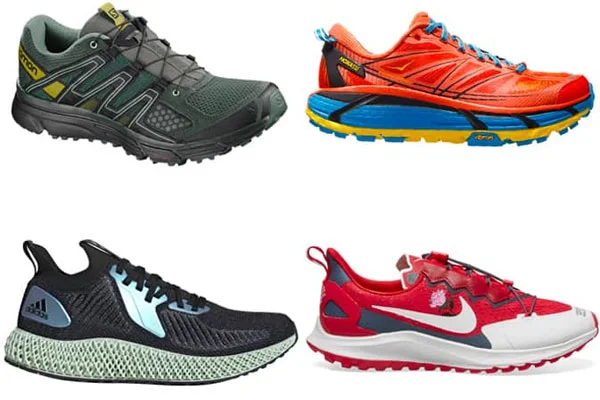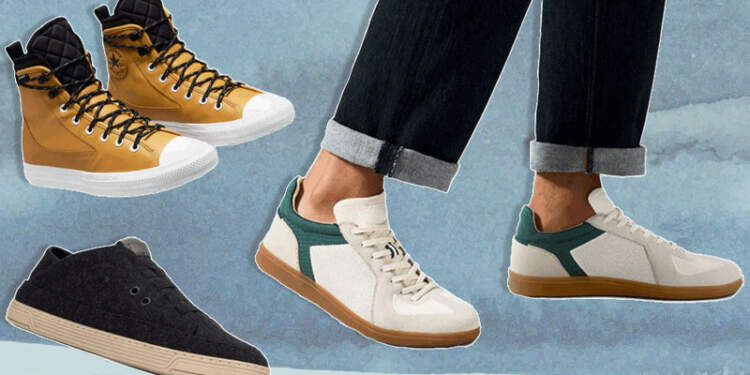Shoes are essential to men’s fashion, critical in projecting personal style and accommodating various lifestyles. As such, understanding trends in men’s shoes is vital for both industry professionals and fashion-forward individuals. Trends in men’s footwear are shaped by a blend of functionality, comfort, cultural influences, and avant-garde design, creating an ever-evolving fashion landscape.
Functional and Athletic-Infused Styles

Over the past few years, there has been a surge in athletic and functional-inspired trends in mens shoes, reflecting a growing desire for comfort and versatility. This trend is embodied in the rise of “athleisure,” where pieces are designed to be suitable both for exercise and everyday wear. Sneaker culture has massively influenced this movement, with sports brands and high fashion houses contributing to an expanded, innovative sneaker scene. Signature models, collaborations with celebrities or designers, and limited releases have become increasingly popular. More than ever, sneakers have been accepted as appropriate footwear for a broader range of social settings, not just for sports or casual outings but even for smart-casual events.
Sustainable and Ethical Choices
With an increasing global focus on sustainability, the shoe industry has shifted towards environmentally friendly practices. Consumers are more conscious about the origins of their footwear, favouring brands that prioritize ethical production and sustainable materials. Vegan leather, recycled fabrics, and biodegradable components are more prevalent and sought after. Brands that convincingly integrate eco-consciousness into their products often gain a competitive edge and customer loyalty.
Chunky and Bold Silhouettes
In recent years, there has been a resurgence of chunky and bold silhouettes, starkly contrasting the sleek and minimalist styles previously in vogue. This trend includes thick-soled boots, exaggerated shapes, and heavy-duty aesthetics that offer a strong statement. While these shoes may not be every man’s choice, they indicate a general trend toward embracing individuality and breaking free from traditional sartorial norms.
The Return of Classic and Heritage Styles
Classic styles like Oxfords, Derbies, and loafers have been experiencing a renaissance, often updated with modern twists. Heritage brands are revisiting their archives to reintroduce classic models, sometimes offering customizations to meet contemporary tastes. Younger generations are starting to appreciate classic styles, and they frequently pair them with more casual clothing to create a look that strikes a balance between heritage and contemporary.
Technical Features and Performance
Performance footwear is no longer just about serving a functional purpose during specific activities.
Advanced technical features such as improved sole traction, ergonomic designs, and breathable materials are now standard in everyday men’s shoes. Footwear technology has advanced to a point where shoes can provide enhanced comfort without sacrificing style, satisfying demands for shoes that can cope with modern men’s busy and varied lifestyles.
Luxury and Designer Shoes
High fashion and luxury are no longer confined to formal wear. Designer brands create shoes that push materials, design, and price boundaries. Men’s footwear from luxury labels often sets the tone in the market, influencing other price points and consumer expectations: detailed craftsmanship, premium materials, and exclusive branding play significant roles in this market.
Customization and Personalization
Customization has become an essential trend with technology increasingly integrated into fashion retail. Brands allow customers to personalize their shoes, whether selecting colours, materials, or even specific design elements. This move towards individualism in fashion allows men to express themselves more distinctly through their footwear.
The Global Fashion Influence
Men’s shoe trends are no longer limited by geography. With the globalization of fashion, inspiration can come from anywhere in the world.
Cultural exchanges lead to a blend of aesthetics, giving rise to globally-influenced footwear trends. From Scandinavian minimalism to Japanese streetwear impulses, the diversity in global fashion scenes contributes significantly to the assortment of styles available on the market.
Transitional and Seasonless Shoes
Season-specific footwear is fading as consumers look for shoes that can transition smoothly between different climates and occasions. Men are getting more picky about their footwear purchases. Thus, versatile shoes that work well for formal and informal settings are becoming standard. This shift towards seasonless shoes suggests that practicality and adaptability are high on the agenda for consumers.
In conclusion, understanding trends in men’s shoes requires examining the interplay between style, function, culture, and innovation. These influences continually redefine what is fashionable and desirable in men’s footwear. Consumers are now more informed and selective, valuing their shoe choices’ aesthetic appeal and sustainability, comfort, and versatility. For brands to thrive in this dynamic environment, they must remain attuned to these trends while leaving room for individual expression and innovation. Whether embracing heritage styles, pushing the boundaries with bold designs, or focusing on ethical production, success in the men’s shoe market is all about striking the right balance and anticipating the evolving needs and desires of the modern man.


